A Peek Inside Andreas Strehler’s Butterfly-Filled Workshop
Andreas Strehler’s workshop is located in the center of Sirnach, which is in the very northeastern part of Switzerland – not the most convenient place to get to for everyone. But then again, the objects that he creates in this location are decidedly not for the masses.
A straight-talking watchmaker and engineer, since 1998 Strehler has been creating mesmerizing timepieces for his eponymous brand as well as complications and movements for a number of other brands that prefer to remain anonymous.
Touring the premises, I very quickly learned that Strehler is more than just a crafter, a watchmaker, or even a passionate watch restorer. He works seemingly effortlessly across his three-dimensional computer platform, which facilitates his creative process for designing timepieces.
Strehler prefers to sketch from the images he holds in the vast creative space in his head directly in his computer rather than on traditional paper using pencil as watchmakers of the previous generation did.
I asked the introverted watchmaker how it was possible for him to solve problems with what seemed like decided ease and he told me, “You must break down a larger problem into small manageable ones then solve them individually.”
He also passionately spoke of the machinery he has carefully placed in the century-old former textile mill that is now his workshop before relating a humorous anecdote concerning the machine, which he first had at his parents’ house: the door to the small workshop in that domicile had to be made bigger to accommodate its arrival.
Of the machines he now owns, Strehler has adapted some with self-created technology to make them more efficient. When apparatus he needed didn’t exist, Strehler built them himself, cannibalizing parts from older, now obsolete machines.
The timepieces bearing his name are all built individually by hand, their components precision-manufactured using CNC and wire spark erosion machines found in his workshop. Strehler leads a small team that helps with the various stages of completion.
Strehler is so confident in his designs that he does not prototype but directly starts production to save time.
There is very little Strehler and his team don’t make themselves other than the sapphire crystal, jewels, mainspring, and hairspring. Creating only about ten timepieces per year, his clientele is a mix of connoisseurs, collectors, and enthusiastic fans of the brand.
Strehler even revealed that one particular client has purchased every single model he has ever produced. Each piece is bespoke and adapted to meet the client’s requests, which range from the case material to the dial color and tweaks to the mechanism.
In other words: if you can afford it, Strehler will make it.
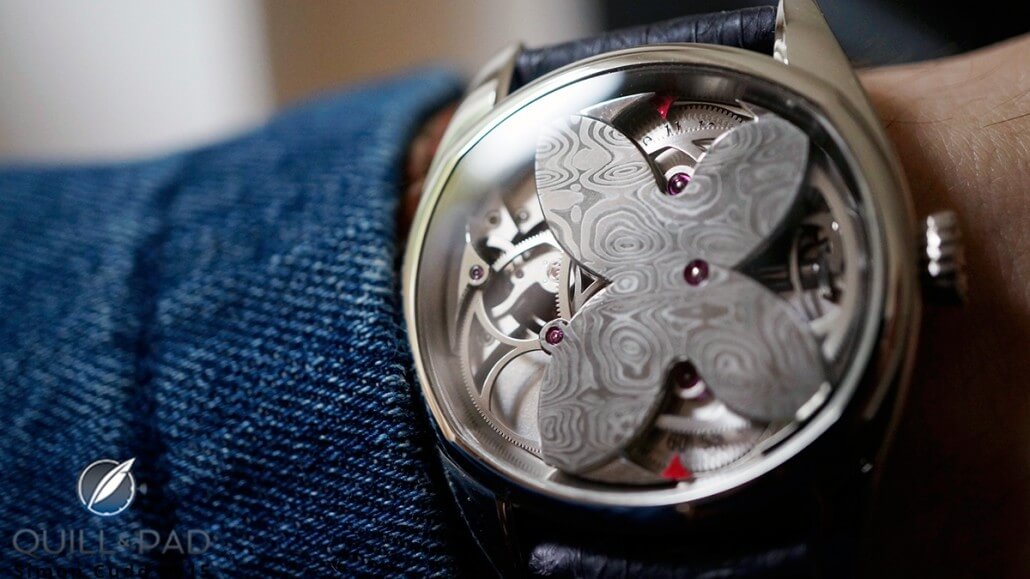
A unique piece Papillon by Andreas Strehler with an unusual damascened butterfly on the front of the watch
Silent partner
Strehler honed his practical skills by working for (Audemars Piguet) Renaud et Papi at the beginning. He also earned himself a name amongst connoisseurs by creating special movements on commission from other brands, such as the flash perpetual calendar for H. Moser & Cie. (see H. Moser & Cie. Endeavour Perpetual Calendar On The Wrist) and Maurice Lacroix’s chronograph movement (see The Maurice Lacroix Masterpiece Gravity: My, How Things Change).
Additionally, Strehler worked with Harry Winston on the Opus 7 in 2007 (see The Harry Winston Opus Series: A Complete Overview From Opus 1 Through Opus 13). The 61 pieces of the Opus 7 sold out within the first days of the 2007 Baselworld fair according to the introverted watchmaker.
And, as previously mentioned, Strehler still manufactures components and makes movements for other brands in addition to his own watches.
Asked which of the four pieces that were presented to me for photographing I would have chosen for myself, I have to say it would be the original Papillon for its cool monotone mix of silver hues that leave the spotlight to the black butterfly-shaped bridge.
The “Papillon” (“butterfly” in French), which one day fluttered into his consciousness by chance, is a constant in Strehler’s work. Unable to get the shape out of his mind, he chose to adapt it into his designs.
For more information, please visit www.astrehler.ch.
Quick Facts Papillon
Case: 41 x 47.2 x 10 mm, palladium white gold
Movement: manual winding in-house caliber with double mainspring beating at “vintage” 2.5Hz / 18,000 vph frequency
Functions: mysterious hours and minutes displayed by toothed sapphire crystal gears
Price: 139,000 Swiss francs

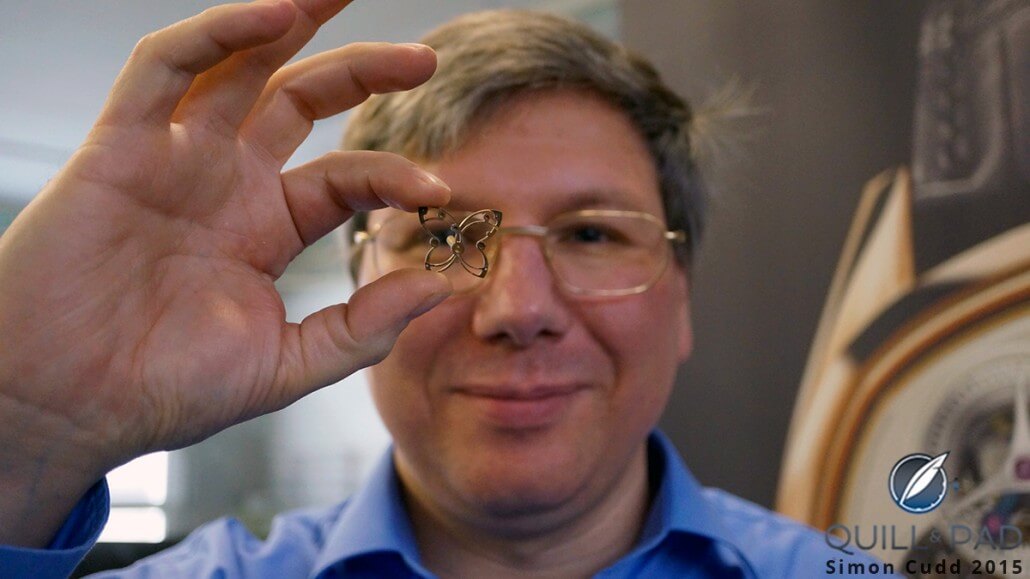

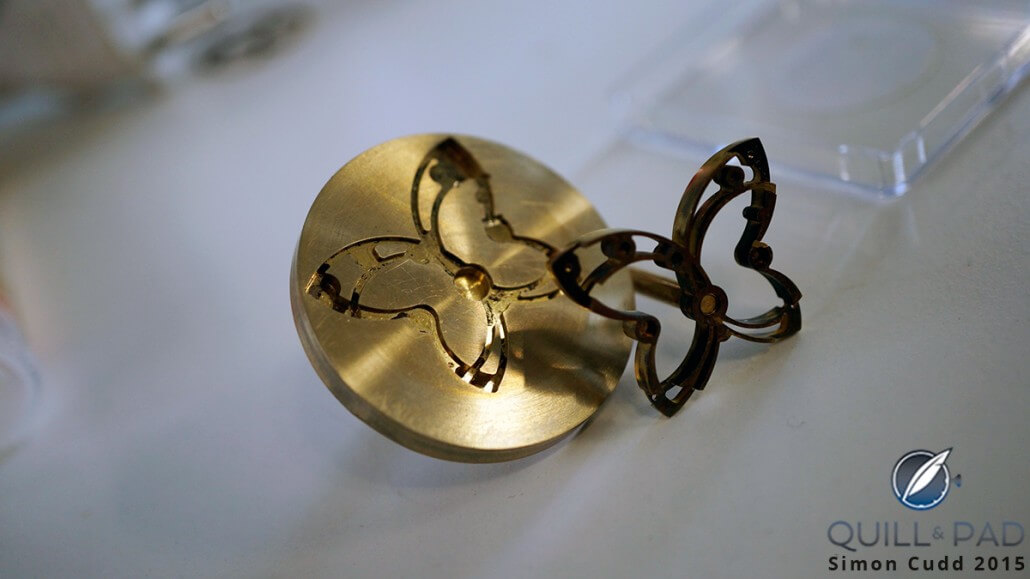
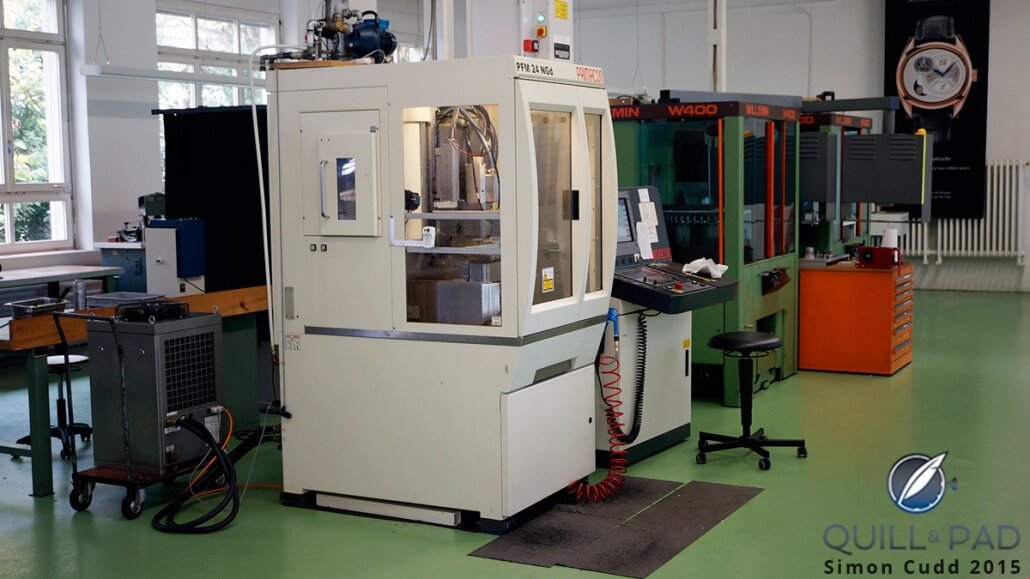
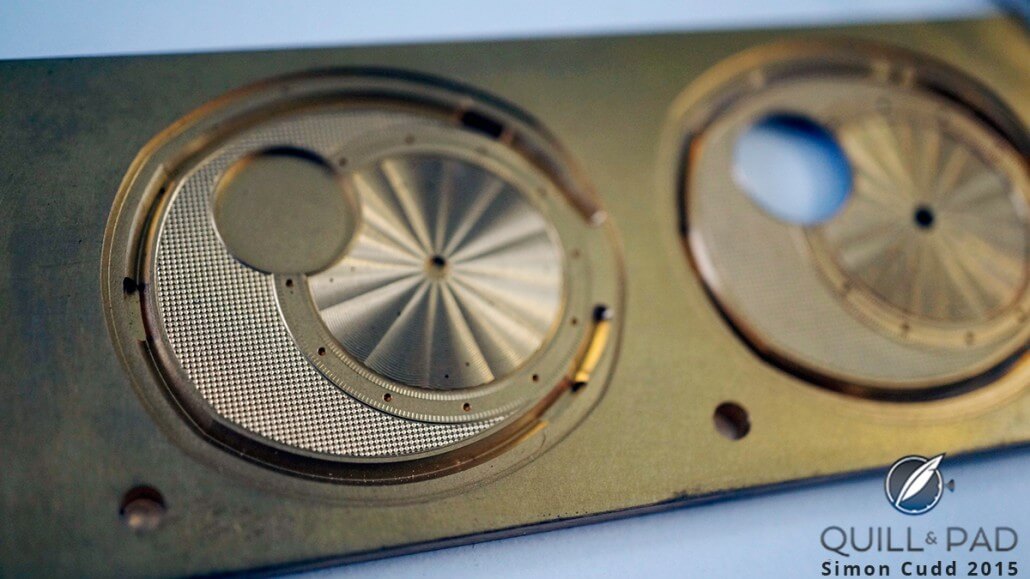
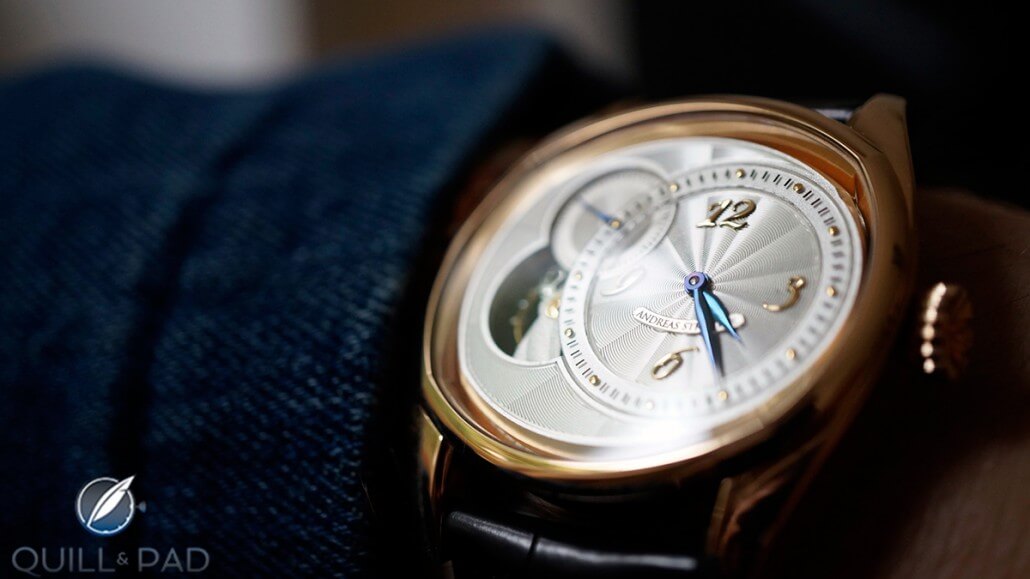
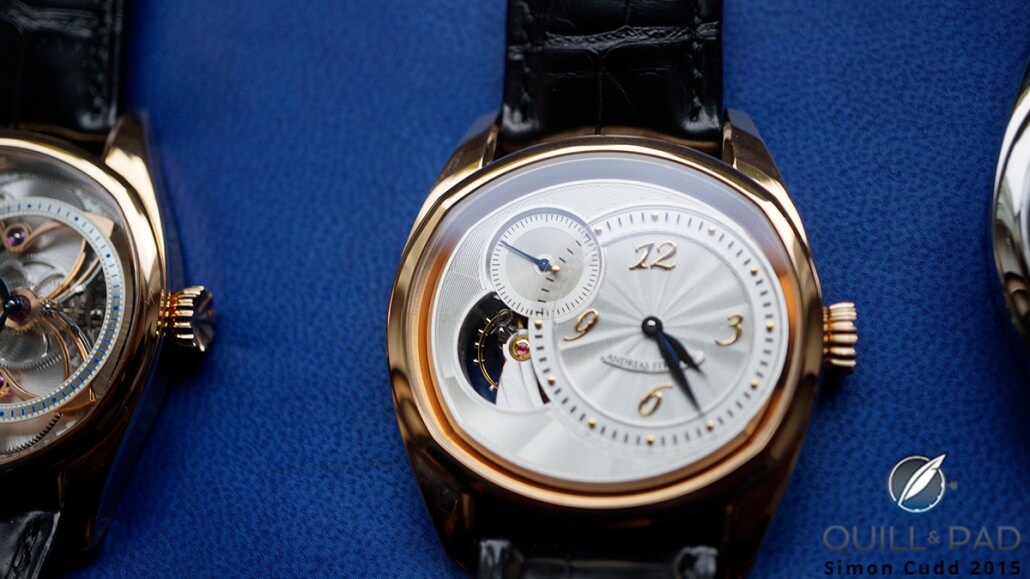
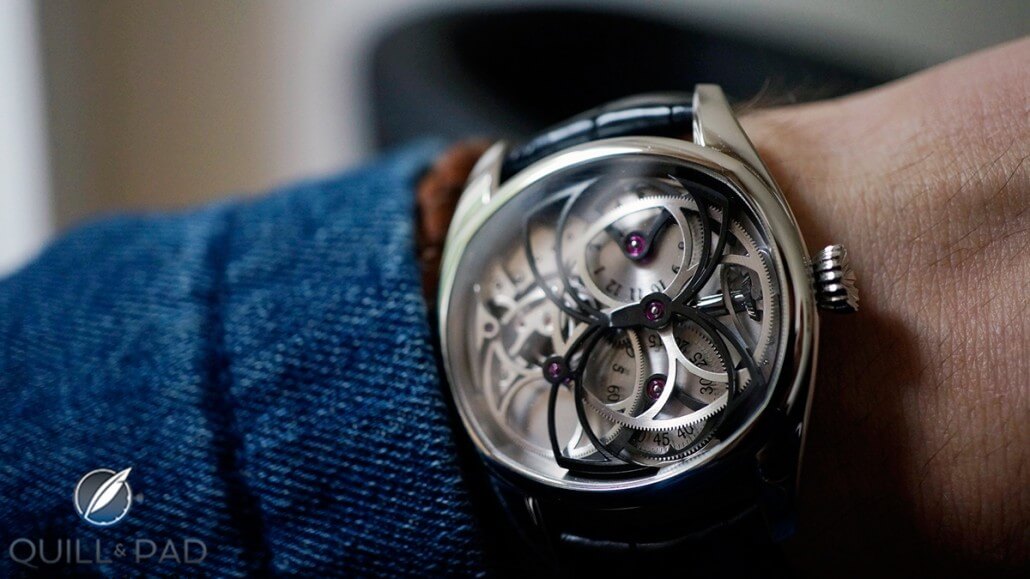
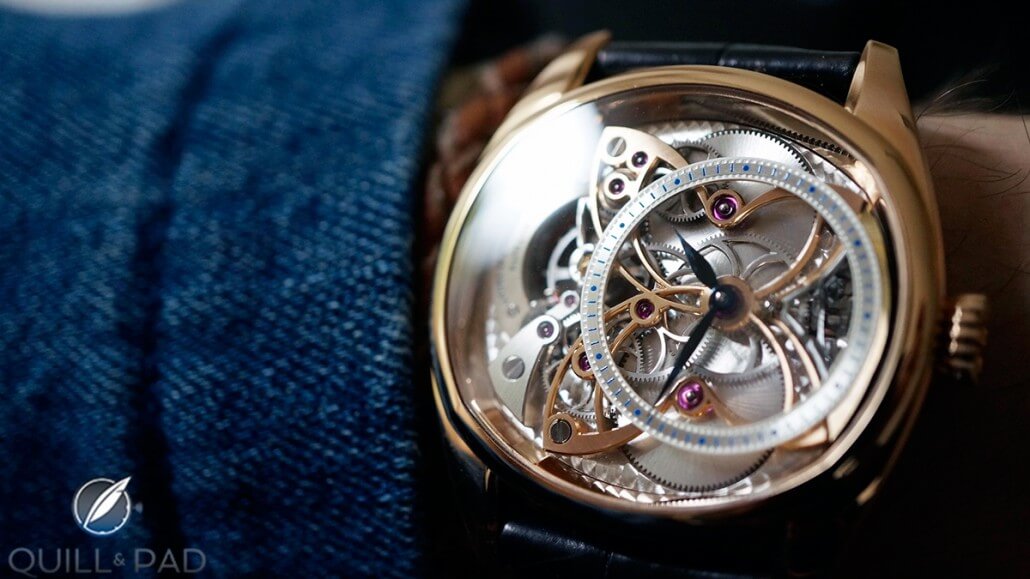


Trackbacks & Pingbacks
[…] A Peek Inside Andreas Strehler's Butterfly-Filled Workshop Andreas Strehler's workshop is located in the centre of Sirnach, which is in the very northeastern part of Switzerland – not the most convenient place to get to for everyone. But then again, the objects that he creates in this location are decidedly … Read more on Quill & Pad […]
Leave a Reply
Want to join the discussion?Feel free to contribute!